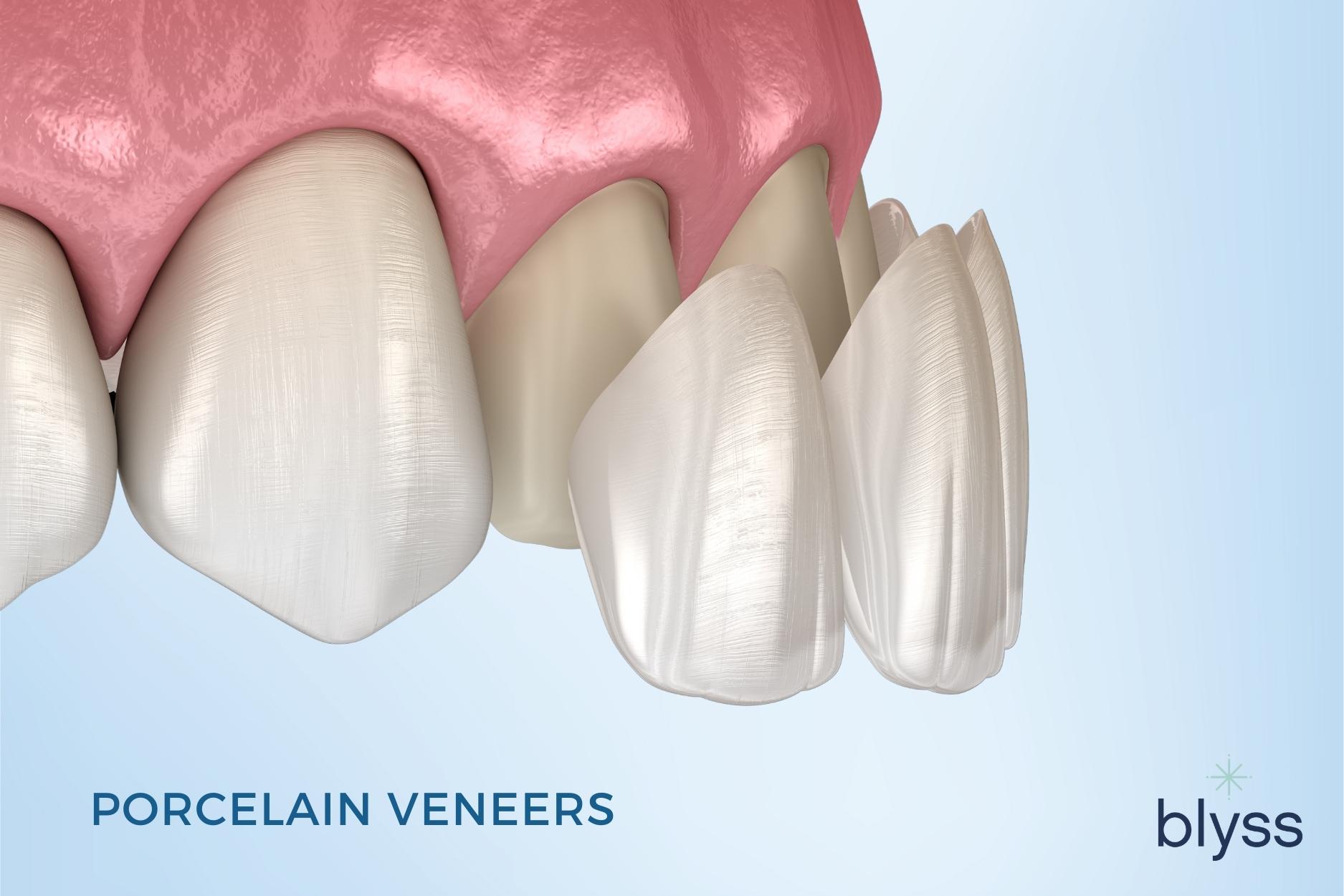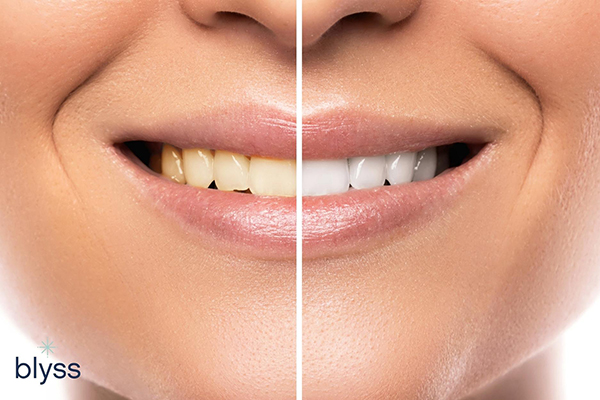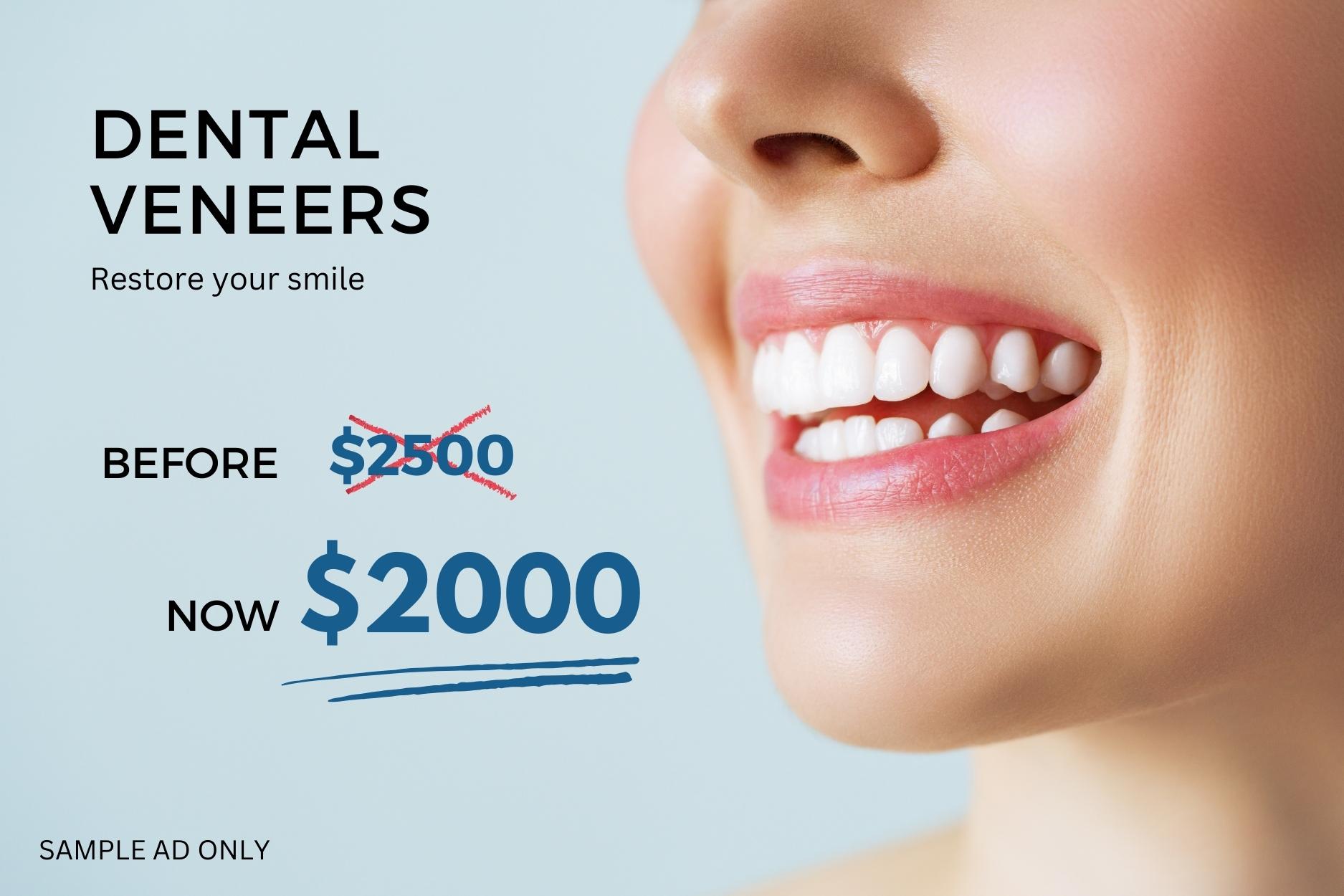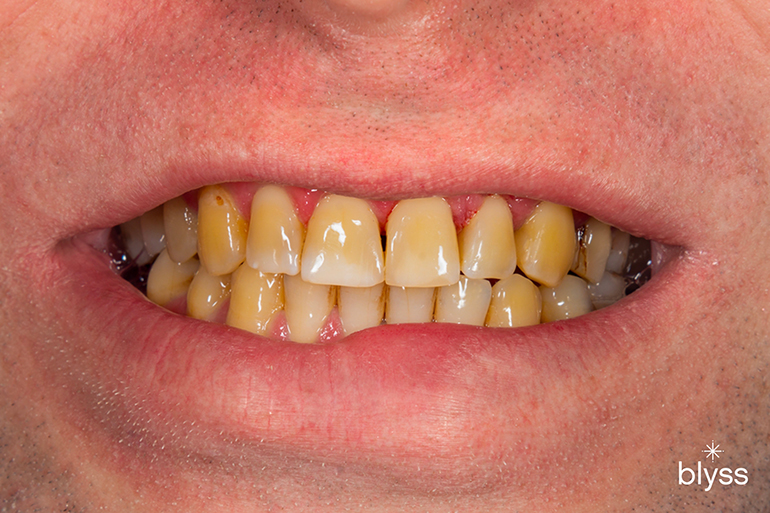Before we begin, you can read up on what veneers are and what they can treat on our page here
How much do veneers cost?
Let’s cut right to the chase. Veneers in San Diego can cost up to $3500 each. On average you’re looking at about $2000 per veneer.
However, you may have seen them advertised cheaper – significantly cheaper. Perhaps as low as $1000 a veneer, or even less.
Why is there such a variation in the price of veneers? Why does it seem to be difficult to get a straight answer on the price?
The problem is there are multiple factors in play when looking into the cost of veneers. Not all veneers are made equal – literally. Different materials have different costs, which also take different numbers of dental appointments. Then there are factors beyond the material costs, such as the dentist’s fees, the location, etc.
Below we’ll take you through the eight key factors that determine the cost, and how you can save at each one.
Veneers Cost Factor One: What is the veneer made out of?
One of the biggest influencers on the cost of your veneers will be the material.
In general, you’ll find veneers made out of one of the following materials:
Type 1: Dental Porcelain & Ceramic Veneers
- Porcelain / Feldspathic Veneer
- Emax Veneer
- Zirconia Veneer
Porcelain veneers are made out of thin shells of porcelain custom-made for your teeth. Porcelain is an excellent restoration material as it has similar properties to tooth enamel. It looks great, it’s durable, and it’s long-lasting when properly cared for.

Porcelain veneers look great, it’s durable, and are long-lasting when properly cared for.
Porcelain veneers are made in a lab by a specialist and applied to your teeth by your dentist. That means it takes at least two appointments – one to scan your teeth and get an accurate impression, and another to put the veneers on. These appointments can be a few weeks apart.
Type 2: Composite Veneers
Dental composite veneers are also known as resin veneers or direct-bonded veneers.
Composite veneers are made of a special type of resin. This resin is mixed together in the dental chair to match the color of your teeth, applied directly to the tooth, and hardened in place using a special curing light.
The entire process only requires a single appointment with the dentist.

Composite veneers can be used to correct a wide variety of cosmetic dental issues, including gaps, chips, and stains. They are also more affordable than porcelain veneers.
Predictably, porcelain and ceramic veneers are more expensive than composite veneers. Porcelain is a more expensive material, requires the work of a specialist, and requires two appointments at a minimum.
Tip: How to save money on porcelain material
You might think the answer is obvious – get composite veneers. They’re cheaper and faster, so that’s how you save money, correct?
While this will be the case in some circumstances, composite veneers are not as durable as porcelain veneers. Porcelain veneers can last around 10-15 years, while composite veneers will last around 2-5. Porcelain veneers are also more stain-resistant than composite veneers.
You need to weigh up why you want veneers:
If you’re looking for a long-term solution – say to fix a cracked or chipped tooth – it will end up being much cheaper to get porcelain veneers.
The upfront cost will be higher, but the long-term cost can be much lower. In the time your first set of porcelain veneers last, you might need to go back 2-3 times for composite veneers.
If you’re looking for a quick cosmetic change, say to make your teeth look perfect for a wedding, composite veneers can be a much faster, cheaper option.
Veneers Cost Factor Two: How many veneers do I need?
It’s fairly simple math: the more veneers you need, the more it’s going to cost. That said, it doesn’t necessarily scale linearly.
Dentists will sometimes offer a full set of veneers that works out to less per veneer than if you only got one veneer. There can be savings to be had by getting multiple teeth done at once.
One thing to note is that veneers are only for front-facing teeth. They are not suitable for molars – those require dental crowns, an entirely different procedure with its costs.
Tip: How to save money: only get what you need
It’s important to consider how many teeth need veneers. It might be tempting to get a good deal on a full set.
But if only half the teeth involved need veneers, you haven’t saved anything – and you’ve unnecessarily interfered with healthy teeth.
If you’re only worried about two to four teeth, but your dentist is pushing for a full set (6-8), there are some things you can do:
- Ask yourself, is there anything wrong with them? Are they chipped, broken, misshapen, or discolored?
- Could any issues, such as discoloration, be fixed with regular tooth whitening?
- Do you need a perfect Hollywood smile? How wide is your smile? How many teeth are visible when you smile?
- See about getting a second opinion.
Veneers Cost Factor Three: Do you need both upper and lower front teeth with veneers, or just the upper?
Veneers are primarily used to make the front upper and lower teeth more esthetically pleasing. But do you need all of those teeth treated?
Getting veneers on both the upper and lower teeth can easily double the cost of treatment. You might think it’s necessary: those are forward-facing teeth and the ones people most notice. Surely they all need to be treated if you have any issues.
But everyone’s smile is different.
For many people, the lower front teeth aren’t very visible when they smile.
The truth is, even if you’re not 100% happy with your lower front teeth, they made not need veneers. While you may have some concerns, they might be hidden enough that you can get away without veneers.
Tip: Start with the upper first
The easiest way to save money here is to just try addressing the upper teeth first. Once the treatment is done and you’ve had a chance to see your new smile, reassess. You may decide you need to continue to the lower teeth – but you might also realize you’re perfectly happy as you are now.
Veneers Cost Factor Four: Dentist Fees
The cost of the veneer material only makes up a part of the cost of veneers. Your dentist’s fees will make up the rest, and this can often account for the wild variation between two seemingly identical treatments.

The cost of a veneer treatment can vary greatly depending on the dentist’s fees
Dentist fees have their list of factors, which we could write an entire article on. Instead, we will touch on the most important factors to consider:
- The experience of the dentist. A dentist just starting is, predictably, going to charge a lot less than someone with decades of experience. You’re not just paying for the time the dentist spends with you, after all; you’re paying for the years they’ve put into getting themselves to where they are today, to provide you excellent service.
- Location. Your dentist’s location will affect how much they charge for their services. A dentist in the middle of a busy metropolitan area will have higher operating costs than a dentist in a more rural part of a state.
- Specialist or general dentist. A prosthodontist is a dentist who specializes in dental restorations, including veneers. They have undertaken further training and qualification, and this will have a price tag attached. General dentists are more than capable of offering veneers and will cost less for the service.
Tip: How to keep on top of dentist fees?
Dentist fees are inevitable – but with some careful planning and dentist selection, you can keep them from blowing out your budget.
- Consider traveling for treatment. Look into traveling outside your neighborhood. Try the next town or city. You may find cheaper options – without sacrificing quality.
- Don’t skimp on the experience. Look at reviews and word of mouth of dentists. It might seem strange to suggest looking for someone experienced when we just said that adds to the cost. The important thing here is to consider long-term vs short-term costs. An experienced dentist is more expensive upfront, but is cheaper in the long term; the chance of something going wrong and needing a correction is much lower.
- Look for dentists who use intraoral scanners. If you’re getting porcelain veneers, intraoral scanners can help keep costs down. At Blyss Dental, I use intraoral scanners to make 3D models of your teeth that can be printed off and sent to a lab to make the veneer. These models are more accurate than traditional impression materials, making it less likely you’ll need a correction when the veneer is applied to the tooth.
Veneers Cost Factor Five: Additional Procedures
Dental veneers can help to restore teeth – both their looks and their function. But rarely can they do everything on their own.
Prior to getting veneers, it is often necessary to perform some extra procedures. These procedures are normally done before you get the veneers, to get the teeth in good shape.
Much like veneers themselves, these can be restorative or cosmetic.
Restorative pre-veneer treatments make your teeth healthy when you apply the veneer. These include:
- A check and clean
- Treating any unresolved gingivitis or periodontitis – infection and inflammation of the gums that can weaken the tooth
- Root canal
- Sometimes even orthodontic treatment, such as Invisalign, moves the teeth into a better position
Cosmetically, the most common treatment you would receive before getting veneers is teeth whitening. This is because veneers cannot be whitened using whitening products; the color that they start at is roughly how they will stay.
What this means is, if you match your veneers to the color of your teeth, then get whitening, your veneers will be a yellower or darker shade than your teeth!
It’s always preferable to get your teeth to the color you want them to be before you get veneers, so the veneers can match. Then, as your teeth naturally restain over time, you can whiten them to match them back to your veneers.

If you want to get veneers, it’s best to have teeth whitening done before so the veneers will match.
You might also have cosmetic procedures such as gum reshaping done before receiving veneers. This will help complete the final look of the teeth once treatment is complete.
Post-veneer treatments usually have to do with the upkeep and maintenance of the veneers themselves. This could be because they’ve moved, come unbound, or broken.
Typically the only treatment option is to replace the whole veneer. This will happen more frequently with composite veneers than porcelain. Patching can be possible with composite resin but is typically not advisable functionally or cosmetically.
Tip: How to keep additional treatments to a minimum.
The biggest way to keep additional treatments to a minimum is to brush and floss your teeth regularly and attend your regular check-and-cleans.
This goes for both pre-veneers and post-veneers. Good oral hygiene is the best way to prevent infections that may need treating, or from your veneers becoming damaged or stained over time.
Avoiding foods that stain teeth will keep you from needing whitening before veneers, and also keep composite veneers their proper color.
Also, try to avoid chewing hard things that could damage the veneer or your teeth. Nails, ice, opening bottles with your teeth – all of the things that dentists say you should avoid even without veneers.
Veneers Cost Factor Six: Deals and Promotions
Everyone loves a bargain!
Just be sure you’re getting an actual bargain, and aren’t being tricked into paying more for less.
Or worse, paying for a fake service.
There are many ways to trick people into paying more for a service than they should – or thinking they’re getting a great deal when it’s actually average, or even worse.
Tip: Do your research
When considering veneers, you’re hopefully taking your time. A good habit is to get quotes from various sources and write them all down to compare.
Then, when you see a sale, you’ll have a baseline to compare it to. Is this a genuine saving, or were they just overpriced to start with?
If you don’t have such a reference, compare both prices and inclusions between similar dentists.
Two dentists in the same area may offer veneers for the same price, but one claims it’s a discount. Look at what services are included with the offer – is it the same price for the same amount of work?
You may find that a “discount” offer lacks a free consultation, or a follow-up visit, or doesn’t include any potential revision work. It’s not discounted – it’s just less work.
Check for genuine sales prices
A depressingly common tactic is to advertise something as a sale with an inflated original price. Say a dentist normally charges $2000 for a porcelain veneer. They might advertise a “sale” where they charge $2000 for a veneer – and claim they normally charge $2500!

A common tactic to increase sales is to advertise something as a sale with an inflated original price like this ad.
These tricks are rare in the medical field, but they can happen.
Keeping up to date on veneer prices can let you know if anyone tries to pull this stunt.
Tip: Avoid unnecessary mark-ups
When looking at treatment packages, be wary of unnecessary markups.
Composite veneers should always be notably cheaper than porcelain. A dentist who somehow makes composite veneers cost the same as porcelain is possibly adding a lot of markup to their price.
Veneers Cost Factor Seven: Insurance
Does dental insurance cover veneers?

The insurance typically covers veneers if you get them for restorative purposes such as fixing a chipped tooth, but if you get them for cosmetic reasons, your insurance may not cover them.
The shorter answer is “yes”, although there is a “but…”
Veneers can be done for cosmetic or restorative purposes. Whether your insurance covers you depends on why you’re getting the veneers.
Dental insurance covers veneers done for restorative purposes. This can be to fix a chipped tooth, or if you suffer acid reflux, to protect teeth against erosion.
Veneers that are done for cosmetic reasons – to reshape or recolor a tooth, for example – are often not covered, unless you have great dental insurance that specifically has cosmetic dentistry insurance. This type of coverage is rare. Often, employers get them from companies that take care of their employees with great dental insurance.
Your specific circumstances will determine exactly how much you pay and how much your insurance pays.
Your dentist will tell you during your consultation what your veneers fall under – cosmetic or restorative – and can give guidance on whether they qualify for insurance.
Veneers Cost Factor Eight: Guarantees
It is best to find a dentist who offers a guarantee for major dental work. This gives you peace of mind that if something goes wrong, it’ll get fixed.
But it also shows the confidence the dentist has in the quality of their work.
At Blyss Dental, I offer a 5-year guarantee on veneer work. In case anything happens to them in that time, you will get them revised at no extra cost.
Tip: Look for dentists who offer good guarantees
This may mean looking for a slightly more expensive dentist. But it’s worth it to get a dentist who is confident in their work and can save money in the long term if something happens.
In conclusion…
Many factors go into veneers cost in San Diego. With a bit of careful planning and shopping around, you can help keep these costs low without sacrificing quality dental care.
If you’re interested in getting veneers, contact us now to learn more about veneers and how we can help you maximize the cost of your veneers. Book your free consultation with us today.



